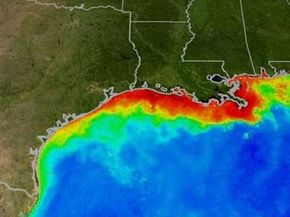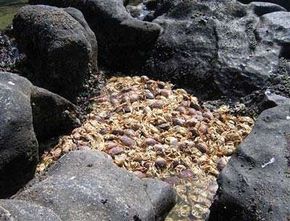Dead zones occur naturally, but human activity is making them much worse by allowing tributaries to become overfilled with some nutrients while those tributaries lack other key nutrients [Source: National Ocean Service]. Nitrogen and phosphorus are the nutrients that contribute most to algal blooms. A lack of silicon in the water limits the growth of diatoms, a helpful type of algae. So where's this nutrient pollution coming from? Intensive farming is a practice commonly linked to dead zones.
Intensive farming, also called intensive agriculture, uses a large investment of capital and some combination of fertilizer, pesticides, fungicides, heavy machinery, irrigation and other modern farming techniques to maximize output from a plot of land. The practice is characterized by higher productivity and requires fewer laborers than extensive agriculture.
Critics accuse intensive-farming practitioners of harming the environment by creating animal waste and fertilizer runoff, using dangerous pesticides, and contributing to animal disease. Today, intensive farming is both quite pervasive and productive, although the use of fertilizers, chemicals and safe environmental practices can vary drastically depending on the farmers and government regulations.
Some scientists cite the ethanol craze as a contributor to the dead zone [Source: University of Wisconsin–Madison]. The use of biofuel crops means more corn than ever is being planted in the United States. Corn requires a lot of fertilizer, which is full of nitrogen that seeps into groundwater and ends up in the Mississippi by way of local rivers. Nitrogen levels in the Mississippi River were up 35 percent in May 2007 compared to 2002, and the river's water levels were down more than 20 percent compared to five years prior, causing a huge influx of algal blooms [Source: Herald-Tribune].
The loss of wetlands has drastically reduced the ability of regional ecosystems to remove nitrogen from local waters. The lower 48 states have lost more than 50 percent of the wetlands they originally had. Alaska and Hawaii have also lost some wetlands [Source: DOE Office of Scientific and Technical Information].

